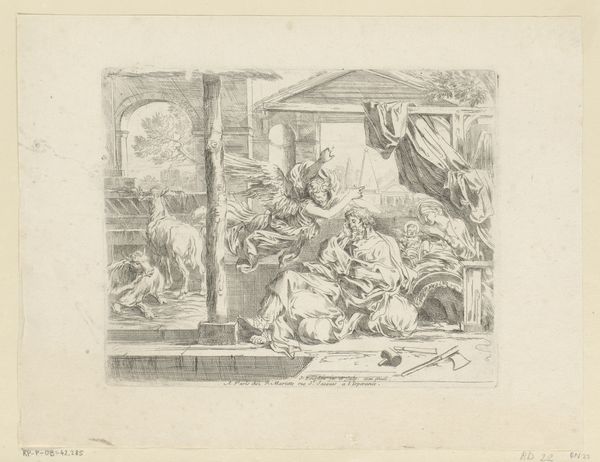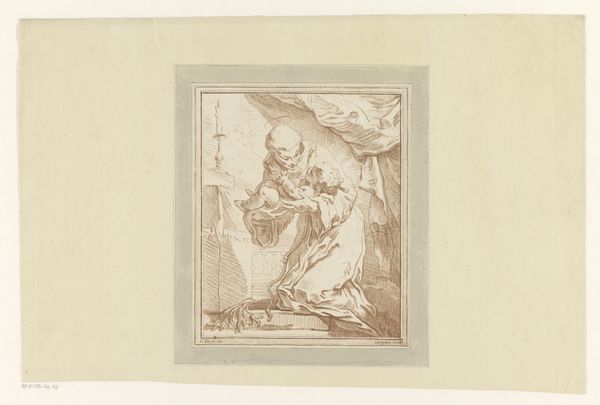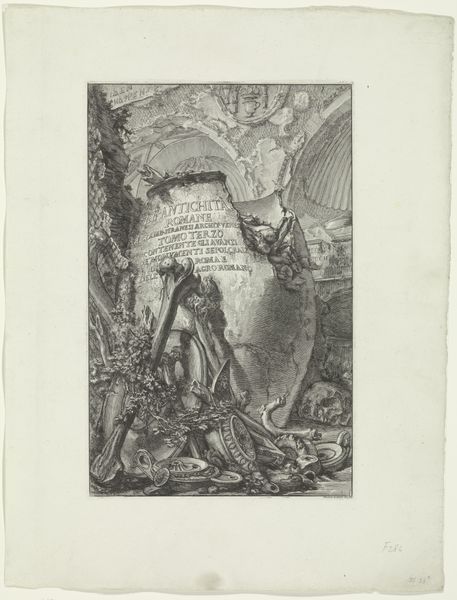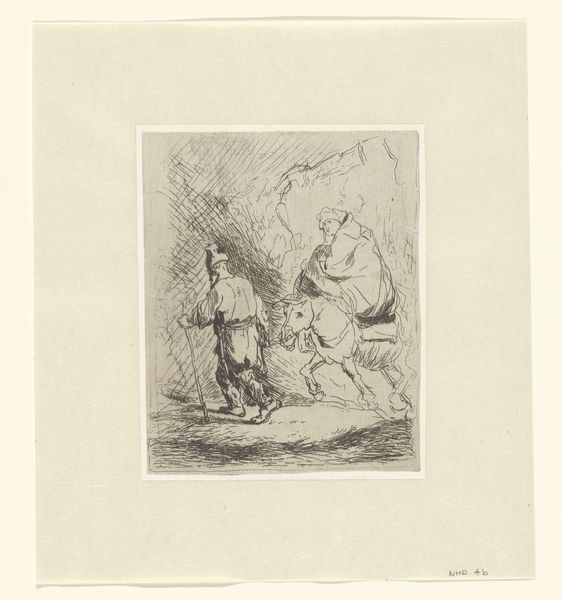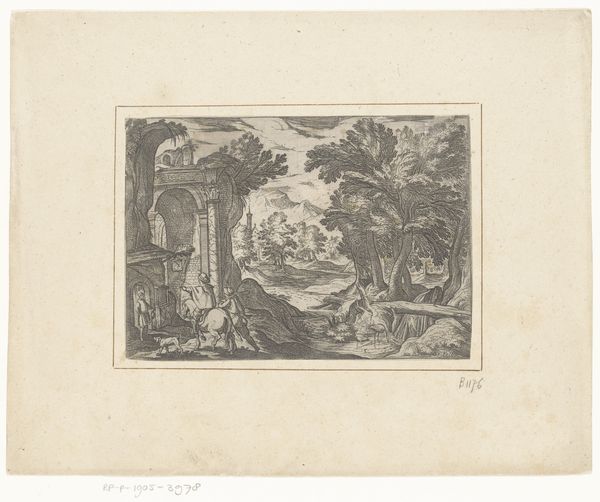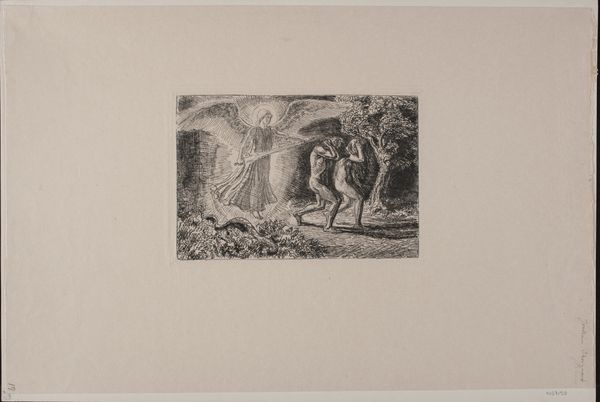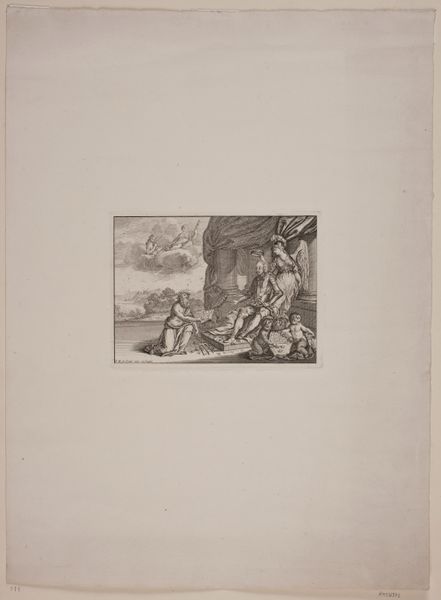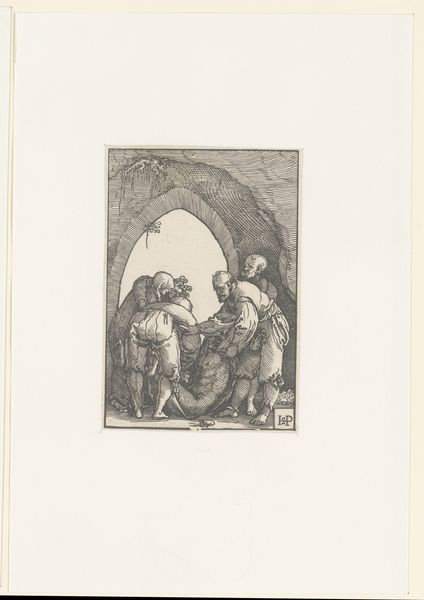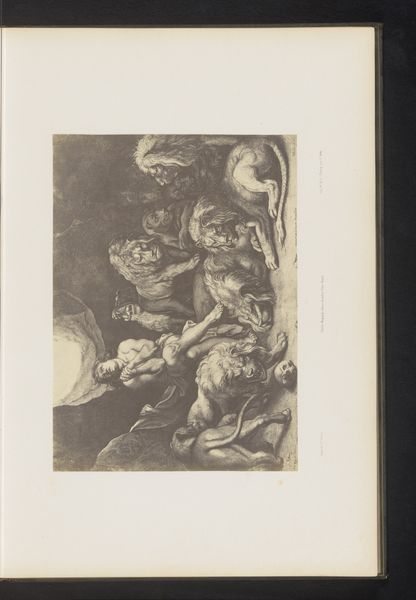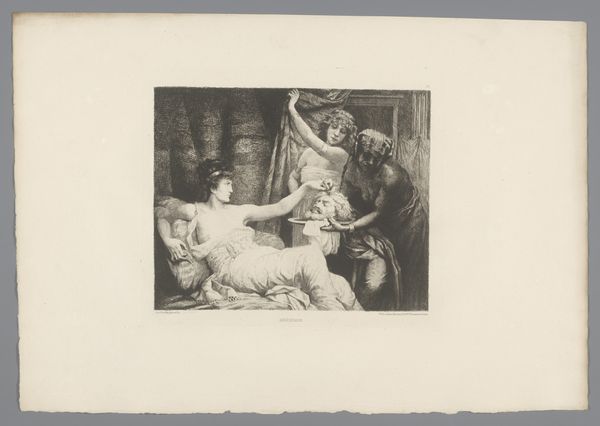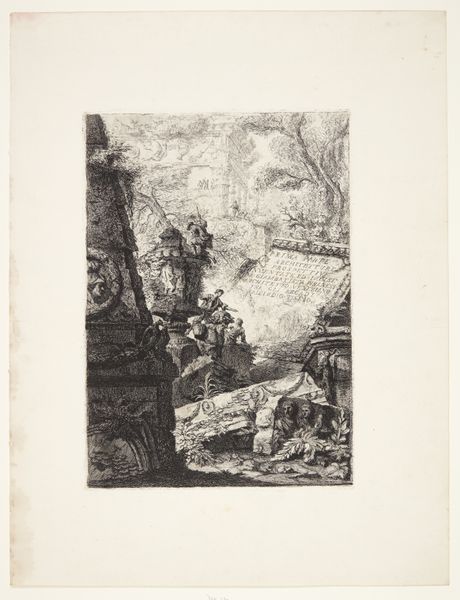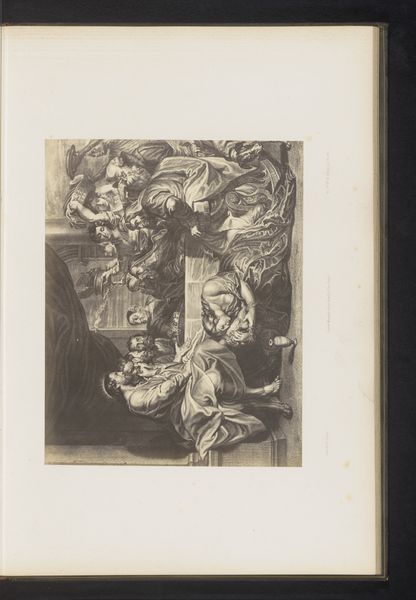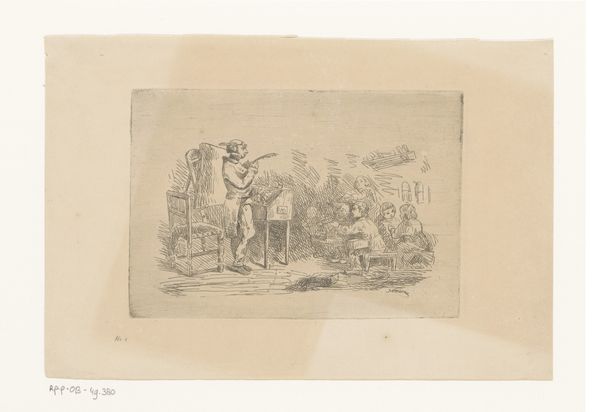
Dimensions: height 219 mm, width 151 mm
Copyright: Rijks Museum: Open Domain
Editor: This is "Herderin met een ram, een geit en een koe bij een ruïne," an engraving by Adam von Bartsch, created around 1805. It has a rather somber, pastoral feeling to it. The animals and the shepherdess feel dwarfed by the ruin. What strikes you when you look at this piece? Curator: The ruin immediately pulls my eye. Ruins are, of course, visual shorthand. They speak to the transience of power and civilization. Look closely—doesn't the position of the ram and the goat, contrasted with the shepherdess, almost suggest an allegorical tableau of domesticity amidst decay? What symbolic purpose do you imagine it may have? Editor: Maybe to show that even the simplest, most bucolic life persists despite the fall of empires? The endurance of nature? Curator: Precisely. The animals, particularly the ram, have long histories as religious symbols, referencing sacrifice, fertility, or strength. The image presents an almost primal scene—figures existing among symbols of bygone eras. It hints at cyclical rebirth. How do you think Bartsch uses these symbols to connect to the viewer? Editor: I guess it makes the viewer think about larger patterns—that history repeats itself. And maybe that there is something timeless in those patterns. Curator: Yes. There’s a psychological comfort in the recurrence. We project onto these symbols, drawing connections to our cultural memories. Considering its presence in the Rijksmuseum today, doesn't it suggest we still grapple with our place amidst historical continuity and change? Editor: I hadn't thought about it that way, but that’s a great perspective. It shows how old images keep echoing through our culture.
Comments
No comments
Be the first to comment and join the conversation on the ultimate creative platform.
